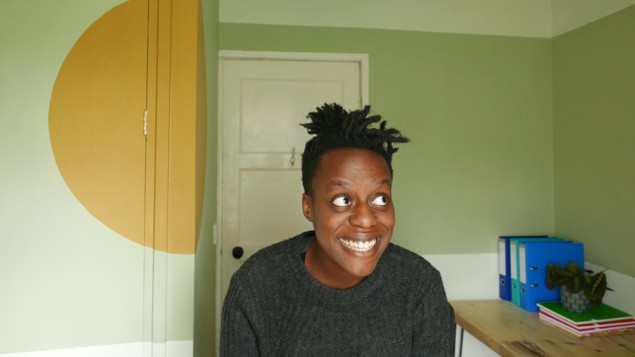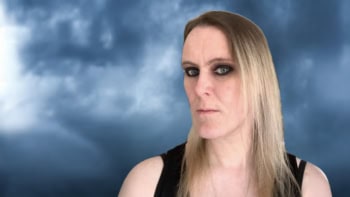Monifa Phillips beat the odds, becoming the first Black woman to graduate with a PhD in physics from the University of Glasgow. She describes her pathway into physics, her successes and struggles in academia, and her future in patent law

I never intended to become a physicist. My experiences of racism and sexism in and outside school shaped who I thought I could be. Having grown up in London too, my parents understood the effects of institutionalized racism and so enrolled my siblings and me in community-based supplementary schooling provided by the Claudia Jones Organisation in Hackney. The school aimed to support, encourage and inspire Black children by providing them with access to Black teachers across all subjects during weekends and school holidays. Although the school closed in 2010 after a 24 year run, citing a lack of funding as a key contributing factor, the organization still serves its local Black community today. With this support, I chose to study maths, further maths, chemistry and physics at AS level. However, I struggled to get the grades I was predicted. For instance, I achieved a C in my physics AS level. Despite this, by the time it came to choosing a subject to study at university, I decided to apply for courses in chemical physics.
I secured a place on the integrated Master’s course at the University of Sheffield, UK, and completed one year of it before switching to physics, which had a larger cohort. Interestingly, had I applied to study physics directly, I wouldn’t have had the grades to secure a place, but my performance in first year put me in good stead. Despite it never being my plan, I enjoyed the challenge of studying physics. However, I did end up making my way back towards chemical physics, opting for a Master’s research project with the solid-state physics group, and then applying for PhDs in materials physics research.
Unlikely path
Obtaining a PhD was yet another thing I hadn’t ever intended to do – but in the final year of my undergraduate degree I started considering it for myself. I realized that although I was on track to achieve a 2:1, which made me an eligible candidate, one of the main reasons I hadn’t considered doing a PhD in physics was because of how very unlikely a path it was for me, a Black woman – or more specifically a Black woman educated through British state school education. Between that realization, my (undying) interest in chemical physics and my love for coursework, I thought “What the heck, I can do this!” I put in a few applications, eventually securing a PhD studentship investigating resistive memory storage mechanisms in multilayer thin film oxide devices with the materials and condensed matter group at the University of Glasgow, UK. My research was lab-based, so I had the pleasure of learning to use a variety of deposition and materials characterization techniques, namely pulsed laser deposition and electron energy loss spectroscopy.
I hadn’t considered doing a PhD in physics because of how very unlikely a path it was for me, a Black woman educated through British state school education
I graduated in 2019, and I was the first Black woman to obtain a PhD from Glasgow’s physics department. It’s an achievement to obtain a PhD for any candidate, but the fact that I was the first Black woman to do so in a university where there has been a chair of natural philosophy since 1727 is a clear indication that Black students, let alone Black academic staff, are still under-represented in physics in academic institutions across the UK. Although I didn’t have much access to other Black physicists while at university, I’m glad to have met many more since graduating. I’d like to give a special mention to the Blackett Lab Family, a relatively new collective of UK-based Black physicists – it’s great to be a part of this community.
Career considerations
I’d always considered studying physics and physics research to be a pursuit of interest (and not necessarily a pursuit of passion) so I invested a lot of time researching careers outside of academia. At the time, there was surprisingly little careers support available for STEM PhD students at Glasgow.
Luckily, a close friend and fellow woman PhD student was just as enthusiastic as me to do something about it. Together we ran a speed-networking event for PhD students from STEM fields, where attendees could come and meet PhD graduates who were now working in a variety of industries outside of academia. With the support of the graduate school, we proudly ran this event for the benefit of ourselves and our peers for two years in a row, until our PhDs came to an end. Both of us were interested in intellectual property: my friend pursued a career in knowledge transfer in academia, whereas I decided to pursue a career as a patent attorney with an intellectual property firm, which I began while still completing my PhD.
Becoming a patent attorney is an interesting and rewarding pursuit for any scientist, but I found that it wasn’t widely advertised to undergraduate STEM students. I first heard about it a few years into my PhD, but trainee positions are in fact open to those holding bachelor’s and Master’s degrees in technical subjects too.
Patent process
I’m currently two years into my training at Venner Shipley LLP, since I joined as an associate in its electronics and engineering team. Patent attorneys are scientists by training who have qualifications in patent law that enable them to help inventors gain legal protection for their inventions. For instance, an inventor can hire a patent attorney to draft a patent application, which includes a technical specification describing and depicting how the invention works, as well as a list of claims that define the scope of the legal protection sought. The application then goes through a “search and examination” process during which a patent examiner may raise objections to the application. These objections correspond to different areas of patent law, such as those relating to a lack of novelty or inventiveness.
A patent attorney’s role is to respond, mostly via letter, by both presenting counter-arguments that overcome some of the objections and carefully amending the application to address the rest of objections. The approach used here depends on how reasonable or well justified the objections are; the content of the patent application when it was filed; and on the inventor’s preferences, each of which change on a case-by-case basis. This means that much of the training undertaken by patent attorneys involves learning to make the best decisions for each case and improving our use of language so as to better express technical and scientific ideas and arguments. Although I’m still developing these skills, I’m certainly enjoying the challenge.



